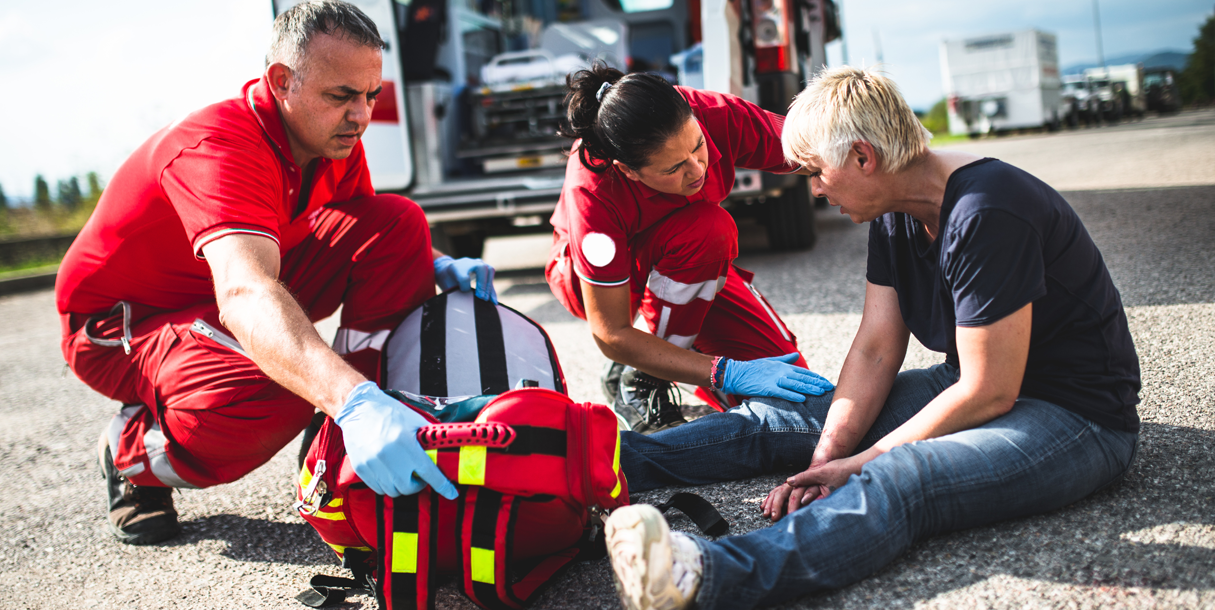Dr. Paul A. Willette, Emergency Medicine specialist takes us through the history of Emergency Medical Services, or EMS, and what happens after someone calls 9-1-1 for a medical emergency.
What goes on beyond the call of 9-1-1?
No one wants to call 911 but rest assured that if you do, within minutes you will be met by a highly trained staff of health professionals able to care for you in an emergency.
EMS Week observance takes place May 19-25. The medical staff at Mercy Health – Urbana Hospital and Mercy Health – Springfield Regional Medical Center are privileged to work alongside these caring individuals who live and work in our community and are there to care for us in times of dire need.
Their life’s work is to respond at a moment’s notice, day or night. Together with the fire service, they help care for us when we are injured, in an accident or experiencing a serious health issue while transporting us to the nearest hospital for emergency care.
President Gerald Ford established National Emergency Medical Service Week in 1974. Since then, it has grown into a comprehensive community recognition that both celebrates EMS and educates our community about EMS’ role in society.
The history of EMS
In 1965, President Lyndon B. Johnson received a report titled “Accidental Death and Disability: The Neglected Disease of Modern Society,” which identified accidental injuries as the “leading cause of death in the first half of life’s span.”
The report found that more citizens were killed by motor vehicle accidents than in the Korean War. Our US servicemen had a better chance of survival on the battlefield than on our city streets. The report made several recommendations for the prevention and treatment of accidental injuries and helped develop standards for EMS.
The first emergency medical technician (EMT) curriculum evolved and grew to include paramedic education, which brought the ability for trained personnel to administer life-saving medication on the streets.
In the early 1970s, the TV show Emergency gave its viewers the ability to witness first-hand what life might be like for these fire-paramedics. The Los Angeles County Fire Department, where Emergency was set, was the first in the US to have such a program and it was the catalyst for fire departments to set up similar units across the county.
Ohio boasts many firsts in the field of emergency medicine. The University of Cincinnati established the world’s first emergency medicine residency program in 1970. In 1973, Akron General Medical Center launched the first community-based emergency medicine program to train future doctors who wanted to work in emergency departments.
Today, there are many programs that work closely with local EMS units to provide education and training. Because of that, most patients who visit the emergency department will receive care from a residency trained, board certified emergency medicine physician.
When is it appropriate to call 911?
A medical emergency is an event that you reasonably believe threatens your or someone else’s life or limb in such a manner that immediate medical care is needed to prevent death or serious impairment of health. People experiencing severe pain, a bad injury, a serious illness or a medical condition that is quickly getting much worse are having a medical emergency. To help you decide if you should call 911, answer these questions (as best you can):
- Is the condition life- or limb-threatening?
- Could the condition worsen quickly on the way to the hospital?
- If you move the victim, will it cause further injury?
- Does the person need immediate assistance from skills or equipment that paramedics or EMTs have?
- Would distance or traffic cause a delay in getting the person to the hospital?
If the answer is yes to any of these, call 9-1-1.
Dr. Willette is a residency trained, board certified emergency medicine specialist with 29 years of experience. He is a clinical professor at Ohio University and works for US-Acute Care Solutions at Mercy Health.






